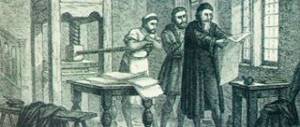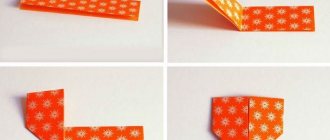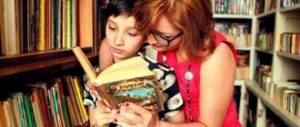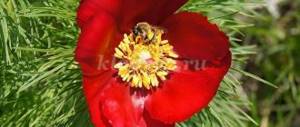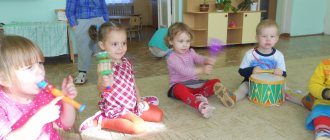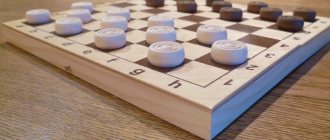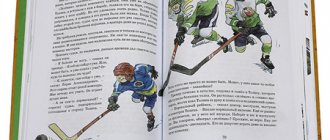What is a book?
In order to create a book, you need to understand what it is. Let’s open Dahl’s explanatory dictionary and read “ A book is sheets of paper or parchment sewn into one binding.”
Ozhegov says : “A book is a work of printing in the form of bound, bound sheets of paper with some text.”
The Soviet Encyclopedic Dictionary states: “A book is a non-periodical publication in the form of bound sheets of printed material (more than 48 pages in volume);
a means of mass, scientific and technical information, a tool of propaganda and education.” In modern understanding, a book is one of the types of printed products: a non-periodical publication consisting of bound or separate paper sheets (pages) or notebooks on which text and graphic (illustrations) information is printed in a typographical or handwritten manner, usually having a hard cover.
A book can also be called a literary or scientific work intended for printing in the form of a separate bound edition. But the book in this understanding did not appear immediately. It had many prototypes in ancient times.
The very first of them is the “ book man ”, because in times when there was no written language, people stored information in memory and passed it on by word of mouth to younger generations. Knotted writing is also known .
The knotted letter was replaced by a letter in pictures . Later, inscriptions - hieroglyphs - began to appear on stone slabs. Over time, a simpler letter arose - alphabetic ; around the 13th century BC, the first alphabet , which belonged to the Phoenicians.
Traveling through countries and peoples, letters were transferred from stone to papyrus, from papyrus to wax tablet, from wax tablet to parchment or birch bark, from parchment to paper. So there were “tile books”, “tape books”, “books” made of wax, books made of leather, birch bark books.
The paper book appeared much later and replaced other types of books, as it was cheaper and more convenient to make and use.
How to prepare a presentation for Children's Book Day?
International Children's Book Day, which is celebrated on April 2, 2020, is celebrated with events in cultural institutions, schools and universities. We offer a presentation option about International Children's Book Day for primary schools, which includes several slides.
Slide 1 The snow is melting, the waters are bubbling, the birds are calling loudly. The children's eyes are blooming like spring today. Both girls and boys love holiday books.
The Book is faithful, the Book is first, the Book is the best friend of the guys. We can't live without a book, We can't live without a book! - All the guys are talking.
Next, the presentation for International Children's Book Day will talk about native speech.
Slide 2 From early childhood to old age, our life is connected with language.
The baby has not yet learned to speak, but his ears are already catching the gentle murmur of a lullaby.
Then he gets acquainted with fairy tales and poems, and as he grows up, he learns to read himself.
A child gets his first reading experience with his first touch of a book.
Slide 3 In former times there were no books. People just told each other amazing stories. But then the letters appeared.
Scribes began to keep records of what was happening. This is how the first handwritten books appeared.
Slide 4 It took 5-7 years to write one book.
In the Egyptian kingdom, books were made from river reeds - papyrus.
In ancient India, palm leaves were used for writing.
Until the 14th century, parchment served as the material for Russian books.
People even wrote notes on clay tablets until paper was invented. Only very rich people could buy books.
A separate presentation slide for Children's Book Day will be dedicated to book printing.
Slide 5 In the 15th century, the German Johann Gutenberg invented a technology that made it possible to print books.
In Russia, the first printing press was created by Ivan Fedorov. As a result, books began to be published in large numbers.
Then, in a presentation on International Children's Book Day (in primary school), you can talk about the history of children's literature in Russia.
Slide 6 You will be surprised, but in the old days there were no children's books. Children read the same religious publications as adults. Only at the beginning of the 18th century did primers, ABCs and other educational literature appear in our country.
Slide 7 The first works for young readers appeared in the 18th-19th centuries: V. Zhukovsky, A. Pushkin, S. Aksakov and others wrote for children. At the beginning of the 19th century, magazines for children began to be published.
In the Soviet years, the works of S. Marshak, K. Chukovsky, A. Barto, L. Kassil, S. Mikhalkov, N. Nosov, V. Bianki and others were popular. Modern readers also know and love these books.
Slide 8 How many proverbs and sayings are dedicated to books!
- A book is a window to the world, look into it more often.
- I read a book and met with a friend.
- A good book is your best friend.
- The book will help you in your work and help you out in trouble.
- Living by a book is nothing to worry about.
And such a poem can complete the presentation on Children's Book Day in elementary school.
Slide 9 Let's imagine, at least for a moment, That suddenly we have lost magazines and books, That people don’t know what a poet means, That there is no Cheburashka, There is no Hottabych. That there is no Dunno, the liar-klutz, That there is no Aibolit and no Uncle Styopa. It’s probably impossible to imagine something like this? So hello, smart, kind word! Let books and friends come into homes. Read for the rest of your life - gain your mind!
Types of books
All books are divided according to different characteristics, which is why each one acts as a representative of many species at the same time. Having studied the variety of types of books, we have identified the following information.
Scheme of dividing books into types
According to social and functional significance:
- scientific;
- popular science;
- reference;
- educational;
- literary and artistic.
To the reader's address:
- For adults:
- for the general reader;
- for a wide range of readers;
- for a narrow circle of readers.
- For children
According to the composition of the work:
- mono edition (one work)
- collections of essays and separate editions of one work, etc. There are other types of books.
What does the book consist of?
“Without reading there is no real education, there is and cannot be any taste, no speech, no multifaceted breadth of understanding; Goethe and Shakespeare are equal to a whole university. By reading a person survives centuries"
Alexander Herzen
Throughout our lives, we deal with books in one way or another. First, we learn to read using the alphabet and primer. At school we learn various sciences from textbooks, read interesting works in collections of fiction. While studying at the institute and at work, we also constantly turn to the book. And finally, we choose literature according to our own tastes and enjoy various books not only for educational purposes, but also simply “for the soul.”
Once again, holding a book in our hands, opening it and turning over the pages, we don’t even think that before us is not only a solid book edition, but also many of its elements. What does the book consist of?
Everyone knows the cover, spine and pages (sheets). But besides them, there are also other components. Let's get acquainted with the structure of the book together.
Cover, binding and dust jacket
“Love a book, it makes your life easier, it will help you sort out the colorful and stormy confusion of thoughts, feelings, events, it will teach you to respect people and yourself, it inspires your mind and heart with a feeling of love for the world, for humanity.”
Maksim Gorky
The first thing that opens to our eyes when we see a book is the cover. It connects the pages and serves to protect book sheets from damage. Typically, the density of the cover depends on the thickness of the book: the more massive the volume, the more reliable the binding should be. However, sometimes it happens the other way around - after all, a thick book itself weighs a lot, so the cover is made for it, although it is denser than the pages, but still light and thin.
Most often, the cover is made from sheet paper, but it is slightly thicker. There are also coverings covered with fabric or leather. Thick covers with a more complex design (for example, due to additional material covering) are called binding. The history of bookbinding began in the 18th century. Then, to protect valuable handwritten books, it was made of wood covered with leather. To prevent the corners from being wrinkled or torn, they were wrapped in metal. Often such bindings were richly decorated with precious metals and stones.
In addition to fastening and connecting, the cover also performs an informative function. It is from the cover that we learn the author's last name and the title of the book. Also, most often at the back of the book, we can read a short summary or find out the name of the publisher and year of publication.
In addition to regular covers, a book can also “wear” a dust jacket—that’s what a removable paper cover is called. It performs an additional protective function (to protect the original cover and pages from contamination), and also often serves as an additional design for the book. Such a removable cover can be much more colorful than the original one, can contain various reviews of famous critics and newspapers about this book, and, naturally, duplicates the basic information: the name of the author, the title of the book, etc.).
Book block
“Have you ever found in a book your own thought, but one that you had not thought through before, some obscure image that now seems to be addressing you from afar and surprisingly fully expresses your subtlest feelings?”
Gustave Flaubert "Madame Bovary"
What's under the cover? That's right, pages. Moreover, the number of pages indicates what is in front of us: publications with up to forty-eight pages are called brochures, all the rest are books.
All pages in the book represent a single whole - a book block. But the book block itself also has a special structure.
The pages in the book are not just attached one at a time, but are combined into notebooks (pay attention to how the pages are attached in a student notebook!). In turn, the notebooks are connected to each other in the spine - a special edge of the book block where all the elements of the book are attached. As a rule, the author's last name and the title of the book are also indicated on the spine.
To strengthen the spine, special ends made of fabric - captals - are attached to it at the top and bottom.
Some books also have a special bookmark - lasse (German Lesezeichen - “bookmark”, French lacet - “lace”). A thin, satin or silk ribbon is attached to the spine and allows you to “remember” the desired page without harming the book.
Flyleaf and nachsatz. Title page. Important information
“There are not many benefits, but good books”
Seneca Lucius Annaeus
Finally the moment has come when we open the book. And here, too, a lot of interesting things await us.
First of all, this is the endpaper (from German vorsatz - “before the sentence/page/sheet”) - a double thick sheet of paper that fastens the binding and pages of the publication. The same sheet is also at the end of the book and it is most often called the flyleaf, although it also has a separate name - nachsatz (from German nachsatz - “after the sentence/page/sheet”). Endpapers can be made of plain white paper or have colorful illustrations: drawings, maps, tables, formulas, etc.
Turning over the flyleaf, we see the title page (from the Latin titulus - “inscription”) - this is the first page of the book. It contains basic information about the publication: last and first name of the author, title of the book, name of the publisher and year of publication.
Several types of data are printed on the title page: overhead, subheading and output.
Overhead data is data located at the very top of the title page. They tell the reader the name of the publisher or book series.
The subtitle data contains information about the genre of the work and lists the names of the translator and illustrator.
Below the rest are output data indicating the city in which the book was published, the year of publication and the name of the publishing house.
Literature. 6th grade Workbook No. 1.
The questions and assignments presented in the notebook correspond to the content of the textbook included in the “Algorithm for Success” system (authors B.A. Lanin, L.Yu. Ustinova, V.M. Shamchikova) taking into account the structure of state certifications OGE and Unified State Examination. The educational material is accompanied by colorful illustrations, which make it possible to intensify work on the development of students' speech. Corresponds to the federal state general education standard for basic general education (2010).
Buy
Before the title page
“No matter what you do, no matter what you do, you will always need a smart and faithful assistant - a book”
Samuel Marshak
In some books, the first page is not the title page, but the foretitle (from the French avant - “before” and the Latin titulus - “inscription, title”). In this case, some of the information familiar to the title page can be transferred to the front title, for example, the name of the publisher or the series of books to which the publication is included. Sometimes a quotation, dedication or epigraph to a subsequent work is placed on the foretitle.
In addition to the front title, another additional page can be placed before the title page - frontispiece (French frontispice from Latin frontis - “forehead, in front” and specio, spicio - “I look” - “I look at the forehead”). In fact, this is not a separate page, but a drawing placed on the same spread as the title page. An illustration usually relates to the author (his photograph or portrait) or to the overall meaning of the work.
Book reference apparatus
“School should teach not what to read, but how to read. Especially today, when the 21st century has offered the book such a tempting set of alternatives that reading can degenerate into an aristocratic hobby like horse riding or ballroom dancing.”
Alexander Genis
The publication's reference apparatus helps to obtain all the necessary information about the book without immersing yourself in reading it: abstract, table of contents, preface, afterword, notes and comments, footer, etc.
An abstract helps to better understand the plot or content of a book and get a brief information about the author. Most often printed in a smaller font than the main material of the book, the abstract is placed on the other side of the title page or at the end of the book.
Preface and afterword. Content
“The reader should notice the details and admire them. The cold light of generalization is good, but only after all the little things have been carefully collected in the sunlight. To begin with a ready-made generalization means to start at the wrong end, to move away from the book without even beginning to understand it. What could be more boring and unfair to the author than, say, taking on Madame Bovary, knowing in advance that this book denounces the bourgeoisie. We must always remember that in every work of art a new world is recreated, and our main task is to learn as much as possible about this world, which is opening up to us for the first time and is in no way directly connected with the worlds that we knew before. This world needs to be studied in detail - then and only then begin to think about its connections with other worlds, other areas of knowledge.”
Vladimir Nabokov
The preface is an introductory article before the main material of the publication. This material prepares the reader for the content of the book and contains the necessary information: facts about the author of the book, the era of creation, events that motivated the author to write your work, assistants and people who helped in the creation of the book, and much more.
The afterword, as the name implies, is placed after the “word,” that is, after the main material of the book. It contains some conclusions about the book, additional information, and explanations.
If the book presents more than one material (that is, we have a collection in front of us), then the table of contents, or table of contents, will help us navigate. It is a list of all the materials contained in this book, indicating the pages.
Shmuttitul
“It’s not so important to teach children to read, it is much more important to teach children to think about what they read!”
George Carlin
It is worth noting that the specificity of a book is often determined by the presence of certain elements of the reference apparatus. For example, at the end of dictionaries, encyclopedias and popular science books, indexes are placed. It is in the indexes that you can find a list of names, terms and subjects discussed in the book.
A kind of table of contents is a schmutztitul (from German Schmutztitel - “dirty title”) - a separate page indicating the name or serial number of a part or chapter of a publication. Initially, the title page was created to protect the title page from dirt. Later, the page was left to decorate the book and divide the material into parts. Now the title can be found not only at the beginning of the book, next to the title page, but also in the middle of the publication and in any other part of it. Different works are divided into parts in different ways, and accordingly the title can appear anywhere in the book.
What else should I read?
“An unbelieving mind, all-forgiving irony, an inquiring look and a voice that insists on nothing”: on the anniversary of Ivan Sergeevich Turgenev
“Exile from Russia, her envoy, a warrior for her better destiny”: on the centenary of the birth of A. Solzhenitsyn
A man of the era in Russian literature: what to tell students about Nikolai Gogol?
Mikhail Bulgakov, “The Master and Margarita”: what else can be said about the most popular novel from the school curriculum?
Note and comment
“Culture is not the number of books read, but the number of understood.”
Fazil Iskander
In addition to the main material on the pages of the book, we can also notice some additions found in the text itself (intratextual, placed between the lines), at the bottom of any page of the work (interlinear - sometimes called footnotes) or at the end of the text (extratextual) - these are notes and comments. Notes are brief explanations of a word or phrase. A comment is an explanation of an entire fragment of text. Both notes and comments can be either authorial or editorial.
In addition to special additions and explanations that briefly reveal the meaning of the text, there is another type of indication - a link. It is used to indicate what material the author relied on to put forward a particular hypothesis. For example, a writer talks about an event that he did not witness. In order not to be unfounded, the author relies on eyewitness accounts and indicates, for example, documents and memories of those people whose testimony can be relied upon. Scientists must also use references, because their research is in one way or another based on the developments of other scientists - and this also needs to be indicated. Encyclopedias and dictionaries also actively use a system of links to make it easier for the reader to find the necessary information. Most often, links are written in a different font, such as italics, so that they can be easily distinguished from the main text.
Running title
“A book is a great thing as long as a person knows how to use it.”
Alexander Blok
A special element of the reference apparatus is the footer (French colonne - “column” and Latin titulus - “inscription, heading”) - a separate line at the top of the page, informing about the author’s last name, the title of the work, the serial number of the part or chapter, etc. We find such a line, if any, throughout the entire work, with the exception of the title page, imprint and illustrations. Sometimes the footer is placed on only one side of the pages, for example, only on each right page of a book edition.
Most often, the header and footer are placed at the top of the page (and separated by a special line) above the main material, but sidebars and footers are also found.
Illustrations
“Some books should only be tasted, others should be swallowed, and only a few should be chewed and digested.”
Thomas B. Macaulay
Book illustrations also deserve special attention. They are placed in books for different purposes - they are designed not only to decorate text material, but also to better understand the essence of the content. Illustrations include not only drawings, but also photographs, maps, tables, etc.
So now we've learned a little more about the "anatomy" of books.
The book is interesting and complex not only for its internal content, but also for its external elements. Depending on the genre of the work, the type of publication, the purpose of creating and publishing the book itself, its components also vary. All books have something in common and, at the same time, are not similar to each other. But every book teaches something and leaves an indelible mark on a person’s memory. The words of Ernest M. Hemingway are absolutely true: “All good books have one thing in common - when you finish reading to the end, it seems to you that it all happened to you, and so it will always remain with you: good or bad, delights, sorrows and regrets, people and places, and what the weather was like.” #ADVERTISING_INSERT#
